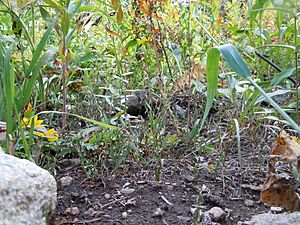Douglas's knotweed facts for kids
Quick facts for kids Douglas's knotweed |
|
|---|---|
 |
|
| Scientific classification | |
| Genus: |
Polygonum
|
| Species: |
douglasii
|
| Synonyms | |
|
|
Polygonum douglasii is a type of flowering plant often called Douglas's knotweed. It belongs to the knotweed family. This plant grows naturally across a large part of North America, especially in the northern and western areas. You can find it in many different places, even in areas where the ground has been disturbed, like roadsides or fields.
Contents
Discovering Douglas's Knotweed
Douglas's knotweed is a widespread plant. It grows in Canada from British Columbia all the way north to Yukon. It also spreads east to Quebec. In the United States, you can find it as far south as California, New Mexico, Iowa, and New York.
A Plant with Many Forms
Scientists sometimes call Polygonum douglasii a "species complex." This means it's a group of very similar plants. Some of these might actually be different species on their own. It can be tricky to tell them apart!
What Does Douglas's Knotweed Look Like?
This plant can look quite different depending on where it grows. It's an annual herb, which means it lives for only one growing season. It usually grows straight up. Its height can vary a lot, from just 3 centimeters (about 1 inch) to 80 centimeters (about 32 inches) tall.
Stems and Leaves
The stems of Douglas's knotweed are thin and have angles. If the plant grows in high places, it might be smaller. Sometimes it even trails along the ground. Its leaves can be long and narrow, or wider and shaped like a spear. As the plant flowers, some leaves might fall off. Other leaves might become very tiny scales at the tips of the stems.
Flowers
The flowers of Douglas's knotweed are small, only a few millimeters long. They can be pink or white. Sometimes, the flowers stay closed. Other times, they open up together in a small group.

